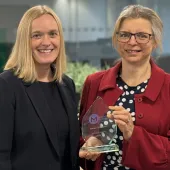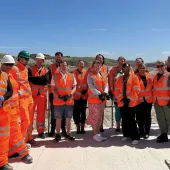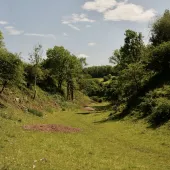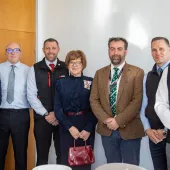New Reeds Bed in at Smiths Bletchington’s Gill Mill Quarry
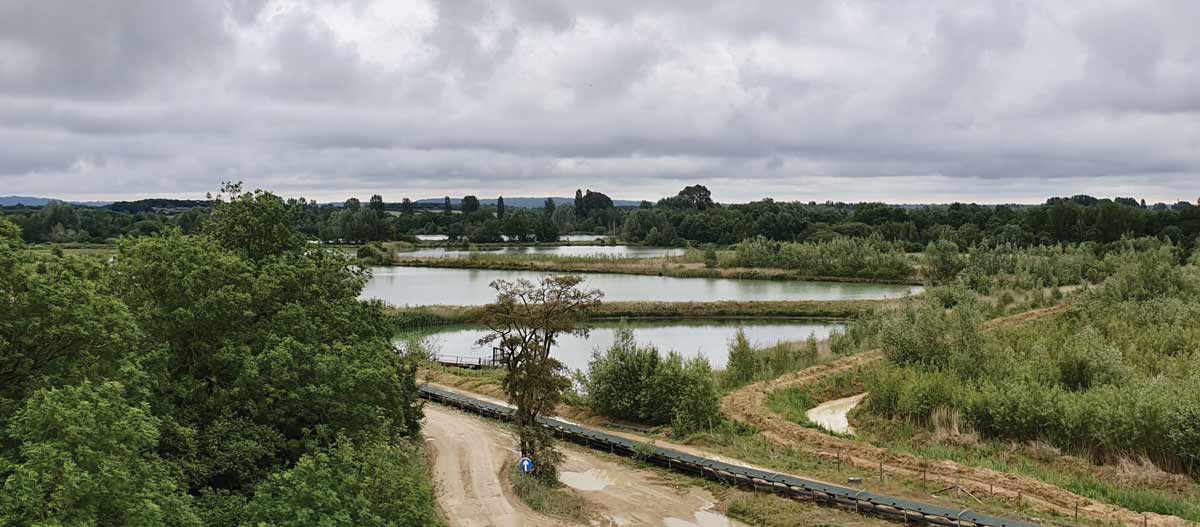
First published in the November 2019 issue of Quarry Management
A long-term restoration project that will see the creation of the largest new reed-bed habitat in the south of England
On the face of it, minerals extraction may appear a relatively simple and straightforward process to the unversed. Reserves are identified and applications are made for the go-ahead to remove the earth’s natural riches. But, as we all know, the process is considerably more complex, wrapped up in a rich mix of consultations, legislation and an equal measure of negotiation, all of which can take years.
But extraction is just a small part of a much bigger picture that also involves reinstatement, restoration and often repurposing of land use post-extraction. James Thorne, chief executive officer at the Institute of Quarrying, says: ‘Our members, who represent organizations large and small, are only too familiar with the myriad challenges faced in minerals extraction — before, during and after areas are worked.
‘But what inspires us all are the successes and the innovations for which our industry does not yet receive the recognition it deserves. There are many fantastic examples across the UK and beyond of brilliance when it comes to sympathetic and sensitive ways of working, which don’t just restore landscapes, but often enhance them.
At Smiths Bletchington’s Gill Mill Quarry at Ducklington, on the outskirts of Witney, Oxfordshire, the company is part of the way into a long-term restoration project that will see the creation of the largest new reed-bed habitat in the south of England. Ben Strickland is the quarry manager at Gill Mill. He explains: ‘Our plans for worked areas at Gill Mill continue and expand our programme of progressive restoration for nature uses. These have been widely welcomed in terms of their substantial potential contribution to Oxfordshire’s biodiversity targets.
‘The sympathetic restoration will see new nature habitats covering over 120ha, together with areas of recreational use and eco-tourism development for local people and visitors alike. In addition, we are creating more than 11km of new footpaths which will bring access to the majority of the nature reserve. Large areas of the site will be restored to reed beds creating a perfect habitat for all kinds of wildlife, especially birds. There will be areas of woodland throughout the site and amongst these areas we propose to have a number of eco-tourism lodges for holiday lettings.
‘Step back 30 years and this was an uninspiring area of open agricultural fields. In the near future it will be a valuable community asset that includes lakes, open water, reed beds and walkways. We are introducing a whole new range of biodiversity for everyone to enjoy. It’s a spectacular example of what can be achieved with vision, energy and the drive to succeed.’
Planning application
The restoration project at Gill Mill Quarry is one side of a genuine success story. Smiths & Sons (Bletchington) is a family-owned business now served by the fourth generation of the Smith family. The site at Ducklington is very much part of the company’s future.
Mr Strickland explains: ‘Permission for a major extension to the quarry will enable this site to supply a further 5 million tonnes of sand and gravel to help meet local needs over the next 25 years. In doing so, it will protect the future of our existing operation which supports around 40 jobs directly, as well as many more indirectly. We are also a primary site for recycling local building waste as aggregates.
‘This new 97ha extension lies just to the north of our existing processing plant and is bordered by the A40 to the north, the eastern arm of the river Windrush to the west and Cogges Lane to the east. What this shows is that we are able to continue to operate a working quarry alongside what will become an area of natural beauty for the public to enjoy. This really reinforces the fact that minerals extraction is not the intrusive industry often envisaged by the public.’
Over the life of the current extraction operations at Gill Mill, land previously quarried has been progressively reinstated to new beneficial after uses. This includes the Rushy Common Nature Reserve in Cogges Lane in 2012 and the popular neighbouring Tar Lakes, which feature circular walks designed with wheelchairs in mind.
Sarah Fry is IQ’s head of membership and marketing. Having visited Gill Mill Quarry earlier this year, she says: ‘If you’re looking for a textbook example of how to do things well, look no further. The company is working closely with a number of experts to ensure that how it restores the site matches exactly to the detailed plans for creating the largest reed-bed habitat in the south of England.
‘The application of GPS-enabled mobile plant allows the company to match exact profiles as agreed as part of its site restoration plans. In-cab technology guides operators to achieve agreed gradients, taking out the guesswork. This attention to detail is only possible through the application of innovative new technologies, in which Smiths Bletchington have invested heavily.’
For more information and to join IQ membership, visit: www.quarrying.org
- Subscribe to Quarry Management, the monthly journal for the mineral products industry, to read articles before they appear on Agg-Net.com




